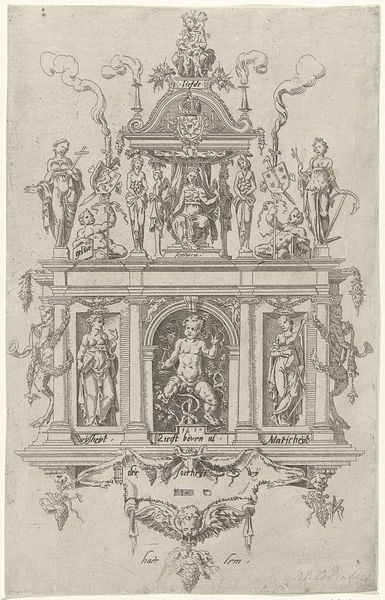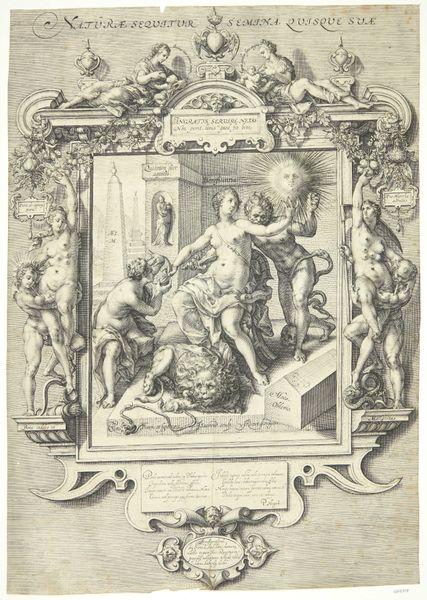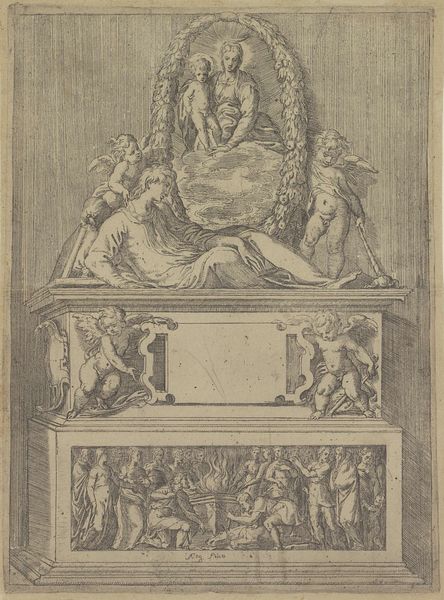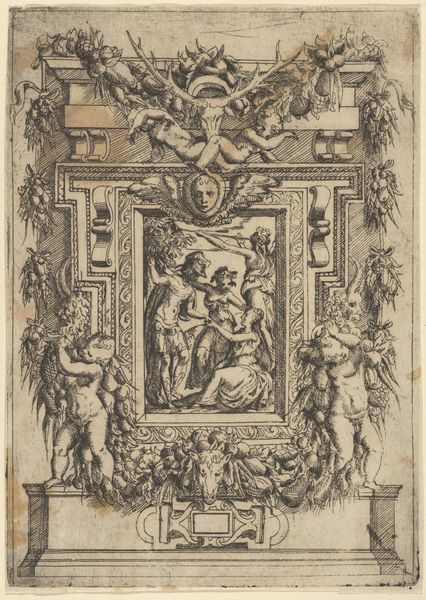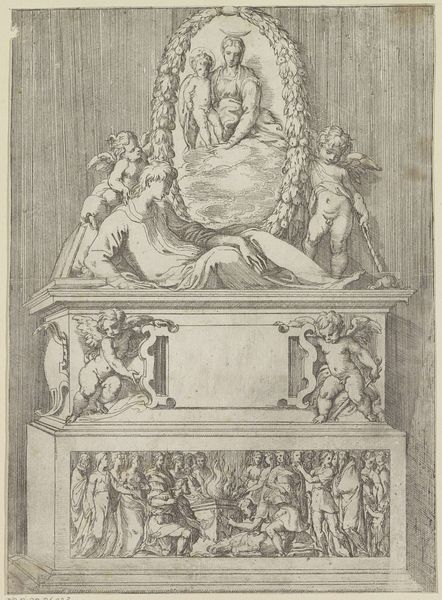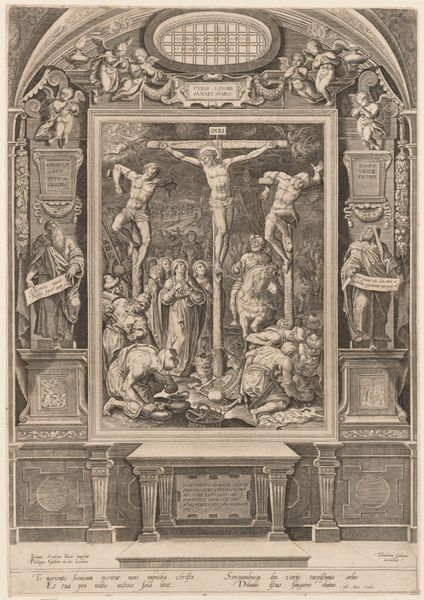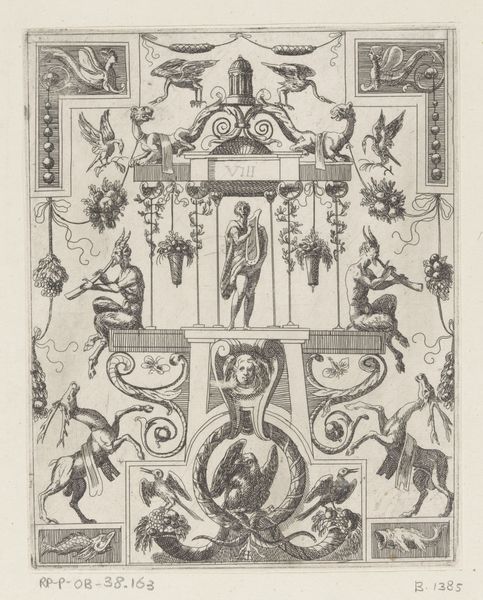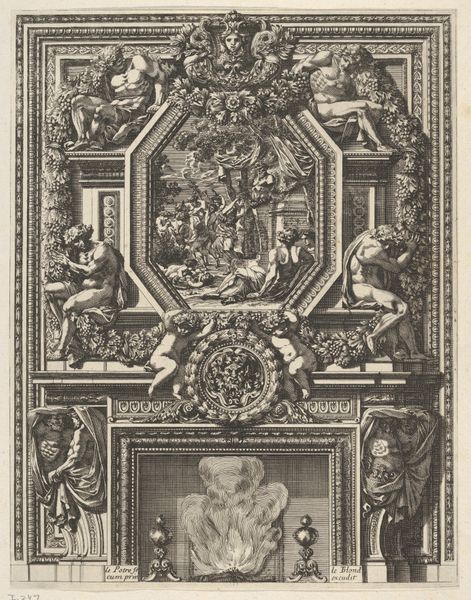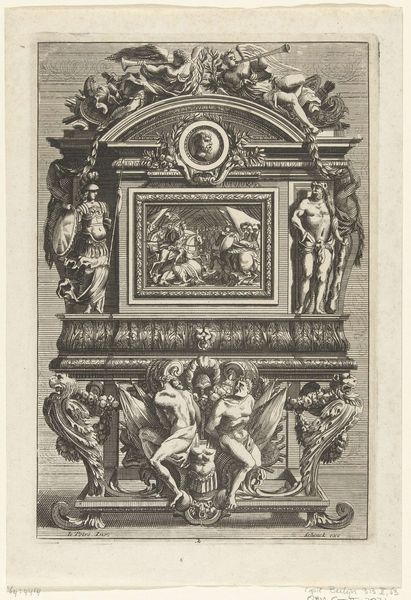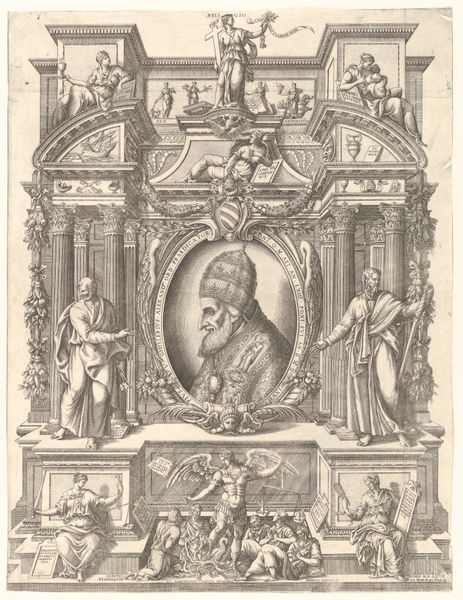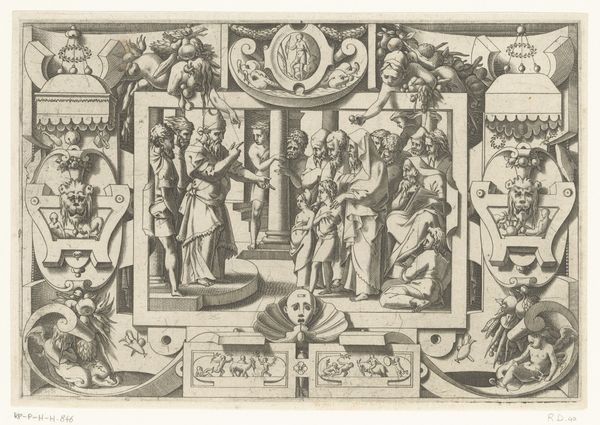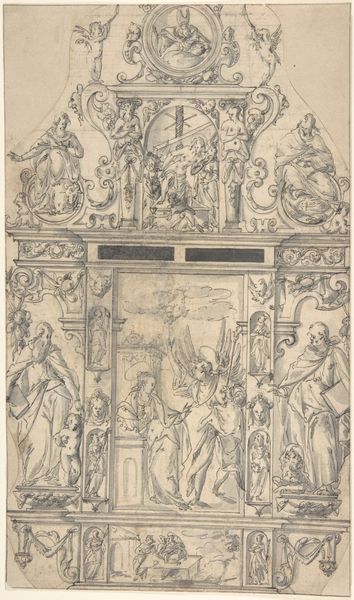
Bust of a woman in profile facing left, set in an elaborate frame with figures in niches 1535 - 1580
0:00
0:00
drawing, print, engraving
#
portrait
#
drawing
#
pen drawing
# print
#
figuration
#
history-painting
#
italian-renaissance
#
nude
#
engraving
#
male-nude
#
profile
Dimensions: Sheet (Trimmed): 7 1/16 × 5 3/16 in. (18 × 13.2 cm)
Copyright: Public Domain
Editor: This engraving, "Bust of a woman in profile facing left, set in an elaborate frame with figures in niches," is attributed to Battista Angolo del Moro and dates back to sometime between 1535 and 1580. The detail is incredible, almost overwhelming. I am curious, what is your interpretation of it, especially in its historical context? Curator: It's fascinating to consider this engraving within the context of the Italian Renaissance's engagement with classical antiquity. The elaborate framing, the inclusion of nude figures, and even the profile portrait itself, all hark back to ancient Roman art and ideals. The artist is not merely depicting a woman; they are constructing a representation of virtue and status, connecting her visually to a lineage of powerful figures from the past. What does the overt display of classicism tell us about the role of art in that period? Editor: So, the figures framing the woman—they aren't just decoration; they are deliberately linking her image to a classical ideal? Does this speak to how the public, at the time, perceived art? Curator: Precisely. Prints like these circulated widely, disseminating classical ideals and influencing taste. Consider who would have owned such a print. Wealthy patrons collected them, but these also provided visual fodder to artists and artisans who adopted and reworked the classicizing elements into diverse objects. Did these types of pieces affect the perception of women in society? Editor: I suppose it would cement ideals and expectations around femininity for women and artists to aspire towards at the time. Curator: Exactly. Images, especially during this era, held considerable power in shaping societal norms and conveying political ideologies. Understanding this engraving demands that we think about art's relationship with power. Editor: This piece reveals how historical artwork is both a depiction of people and ideals of that time, but simultaneously shapes these ideals too!
Comments
No comments
Be the first to comment and join the conversation on the ultimate creative platform.
